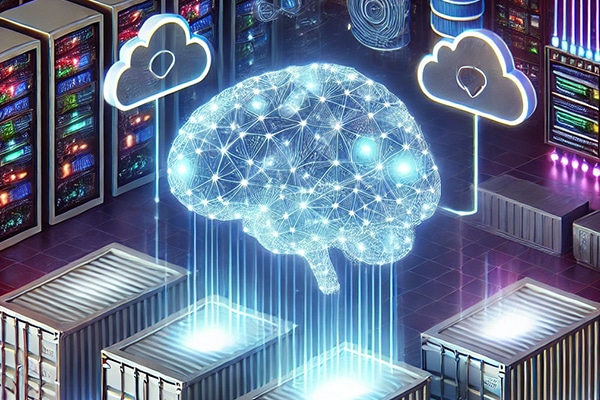Revolutionizing Generative AI with Containers: A Game Changer for Deployment
Generative AI is reshaping industries, facilitating the creation of everything from text and images to music and code. However, deploying these innovative applications brings its own set of complexities. The solution? Containers—along with powerful orchestration tools like Kubernetes and Docker—which provide a solid framework for running generative AI applications smoothly and efficiently.
The Benefits of Containers in Generative AI Deployment
When it comes to deploying generative AI applications, several layers work together to create an effective solution. From user interfaces to backend APIs and complex model layers, these components can be efficiently managed using containerization technology.
What Are Containers?
Containers are lightweight, portable packages that bundle applications with their dependencies, ensuring they can run uniformly across various environments. While Docker simplifies the creation and management of individual containers, Kubernetes excels at orchestrating them on a larger scale.
Key Advantages of Using Containers
- Isolation: Containers isolate applications from their host systems, minimizing conflicts and ensuring consistent runtimes.
- Portability: Whether moving from development to production, containers offer a consistent environment, significantly reducing the frustration of "it works on my machine" scenarios.
- Scalability: The variable workloads of AI and machine learning can be demanding, and containers adapt to scale resources up or down as necessary.
- Automated Deployment: Automated CI/CD pipelines streamline the deployment process, allowing teams to push updates without downtime.
- Resource Optimization: Kubernetes smartly allocates resources, ensuring that the right computational power is available when needed, especially for GPU-intensive tasks.
These advantages make containers an ideal choice for managing the complexity and resource demands of generative AI applications.
Integrating Containers with Generative AI
Microservices Architecture
Adopting a microservices architecture allows disparate components like data preprocessing, model training, and inference services to run in their own containers. This method enhances both scalability and maintainability.
Job Scheduling
AI model training can be a time-intensive process; Kubernetes simplifies management through job scheduling. With Kubernetes jobs, teams can automate and monitor training tasks, ensuring efficient resource use.
Model Serving
Once models are trained, they must be served for inference. Kubernetes seamlessly integrates with tools like TensorFlow Serving and Seldon Core, offering high-performance serving solutions.
Data Pipelines
Managing data is crucial in AI, and Kubernetes supports this through tools like Kubeflow, enabling effective orchestration from data ingestion to preprocessing, training, and deployment.
Deploying Your Generative AI Application
Ready to launch your generative AI application? The deployment process starts with some straightforward steps:
-
Containerize the Application: Use Docker to create a container image by writing a Dockerfile that outlines your application’s dependencies and settings.
-
Push the Image to a Registry: Once the image is ready, push it to a container registry, making it accessible for Kubernetes.
-
Create Kubernetes Manifests: Define your application’s desired state through a set of YAML files outlining deployments and service configurations.
-
Deploy to Kubernetes: With
kubectlcommands, you can deploy your application to a Kubernetes cluster, where the orchestration magic happens. - Monitor and Scale: Utilize Kubernetes’ monitoring features to adjust resources based on demand dynamically.
By leveraging containers alongside Docker and Kubernetes, developers can build robust generative AI applications that operate efficiently and scale as needed.
Conclusion
By embracing containerization, businesses can significantly enhance their generative AI capabilities. This approach not only simplifies deployment but also ensures applications can grow and adapt to evolving demands.
The AI Buzz Hub team is excited to see where these breakthroughs take us. Want to stay in the loop on all things AI? Subscribe to our newsletter or share this article with your fellow enthusiasts.




